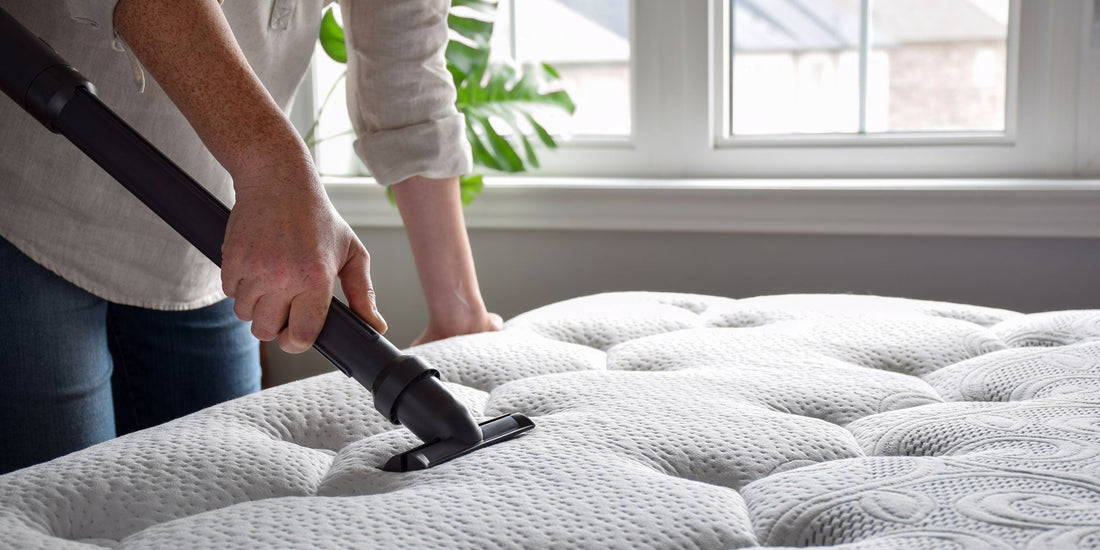
How to Care for Your Mattress: Cleaning, Rotation, and When to Replace It
Share
Your mattress plays a huge role in your quality of sleep but it’s also something most of us forget to take care of. While we regularly wash our sheets and fluff our pillows, the mattress itself often gets ignored. The good news is that a bit of basic mattress maintenance goes a long way in helping it last longer, stay cleaner, and continue to support you the way it should.
Here’s a simple guide on how to care for your mattress, why rotation matters (even with non-turn models), and how to know when it’s time to replace it.
1. Mattress Cleaning 101: Keep It Fresh and Hygienic
Even if your mattress looks clean, it’s likely holding onto more than you’d expect... dust, sweat, dead skin cells, and allergens all build up over time. Here’s how to give your mattress the care it deserves:
🧽 Regular Cleaning Tips:
-
Vacuum it: Use the upholstery attachment on your vacuum to remove dust and debris from the surface. Do this every couple of months.
-
Spot clean stains: Use a mild detergent mixed with water for small stains. Avoid soaking the fabric — moisture trapped inside can lead to mould.
-
Air it out: Strip the bed and let the mattress breathe for a few hours to help reduce moisture build-up.
-
Use a mattress protector: A quality protector adds a barrier against spills, sweat, and dust mites — and it’s much easier to clean than the mattress itself.
Keeping your mattress clean doesn’t take much time, but it makes a big difference in hygiene and lifespan.
2. Should You Rotate Your Mattress?
Short answer: yes even if it’s a non-turn mattress.
While some mattresses are designed to be single-sided (non-turn), rotating the mattress from head to foot every 3–6 months helps it wear more evenly. This can prevent dips or sagging in the areas where you tend to sleep most, which not only extends the mattress’s life but also keeps your body better supported.
🔄 Rotation Tips:
-
Check the label first: Most modern mattresses are non-turn, but almost all can be rotated.
-
Look for corner handles: Many mattresses, like the ones we offer at beds.digital, include corner handles to make rotation easier.
-
Set a reminder: Tie rotation into a regular routine — maybe when the clocks change or at the start of each season.
Skipping this step can lead to uneven wear, and once a mattress starts to sag, there’s no real fix for it.
3. How Long Should a Mattress Last?
Mattresses aren’t designed to last forever... even the best ones. Over time, the materials inside begin to break down, support weakens, and comfort levels drop.
⏳ Signs It’s Time to Replace Your Mattress:
-
You wake up with aches or stiffness
-
You notice sagging or uneven spots
-
You sleep better elsewhere (like in a hotel)
-
It’s over 7–10 years old ...even if it still "feels okay"
Certain types of mattresses last longer than others. For example, pocket spring mattresses with good edge support and high density foam models tend to hold up better over time. But regardless of type, if your mattress is no longer helping you sleep well, it’s probably time to look at replacing it.
Final Thoughts
Taking care of your mattress doesn’t have to be complicated. A bit of cleaning now and then, rotating it a few times a year, and knowing when to replace it can make a real difference in how well you sleep — and how long your mattress lasts.
At Beds Digital, we direct you to mattresses we know are built to last — and we’re always here if you need help choosing the right one for your sleep needs.
